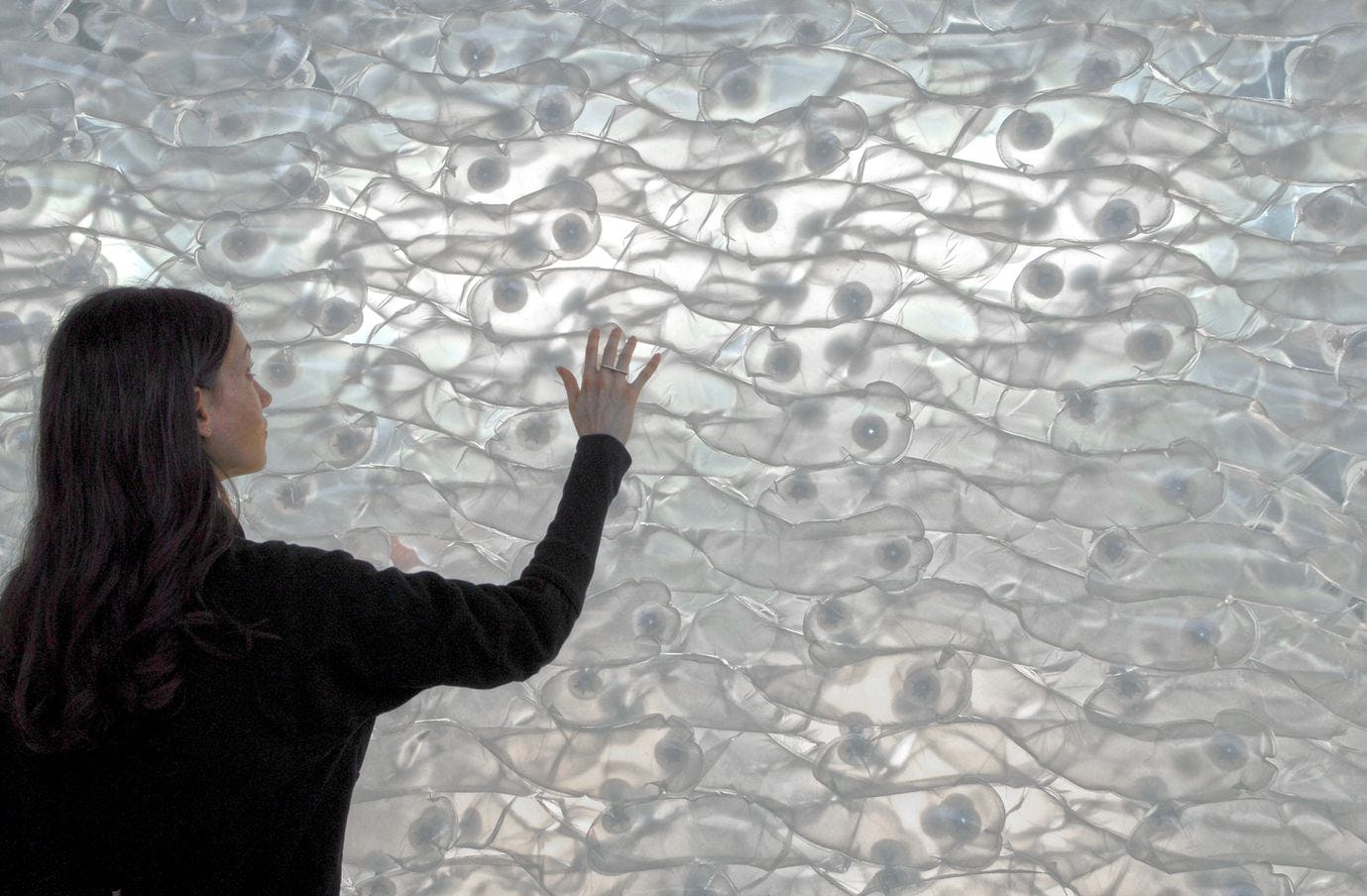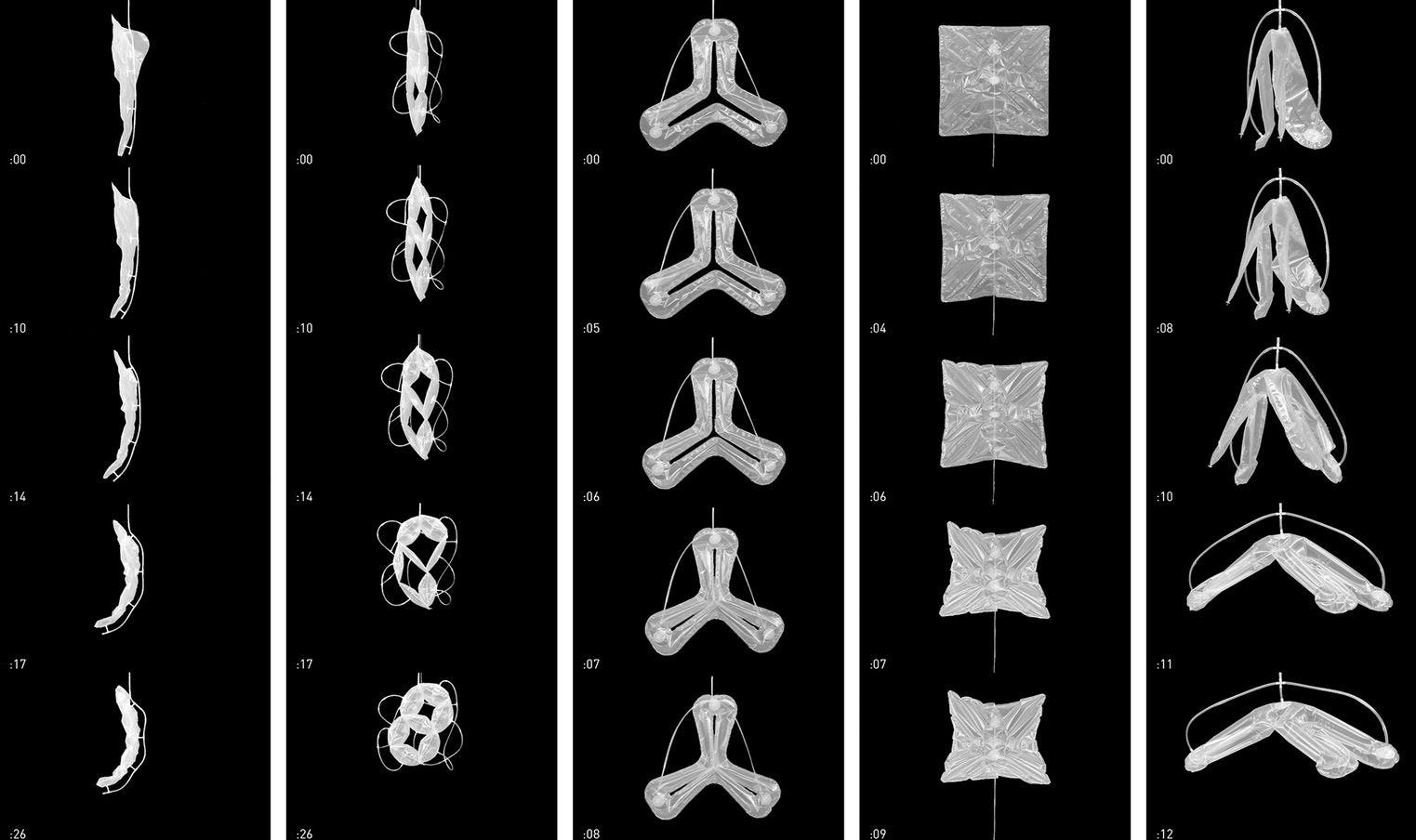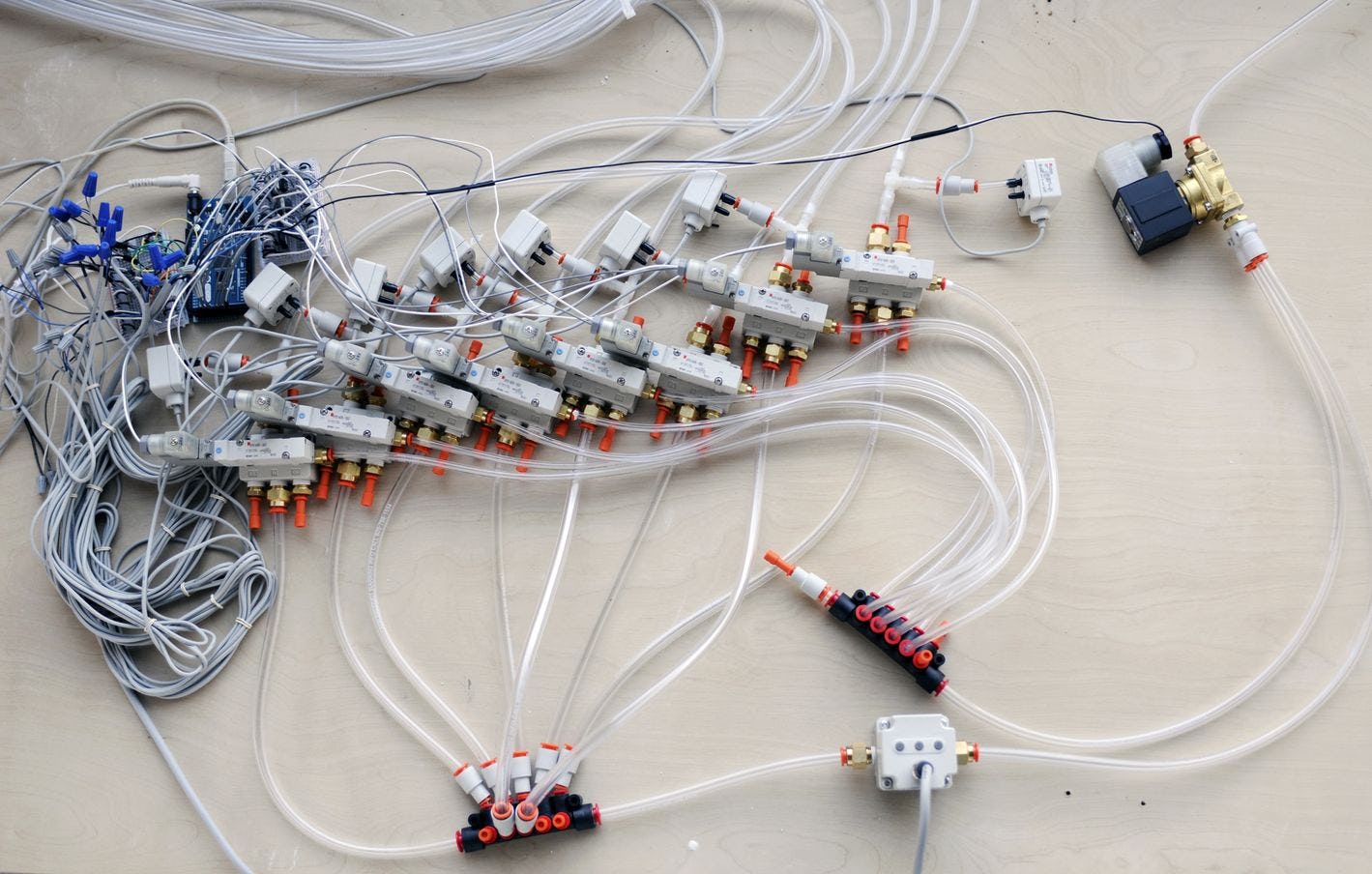Note: the following post is an instructor sample for the Precedent Research assignment.
Nervous Ether is a wall-sized installation of interwoven pneumatic cells actuated in response to environmental data. It was developed by a team of architects and constructed in 2013 as a prototype for future architectural systems. Each cell of the structure is fabricated from heat-sealed plastic using laser-welding, hand heat tools, and customized heating fixtures.

The work comes from the academic culture of architecture and so the publications articulate both philosophical and technical theory behind its development. The title is a nod to the 19th century idea of the ether, but in this case implying that creating an embodiment of information can convey knowledge tacitly into an environment. As an architectural concept, it is intended to have both aesthetic form and functional purposes of controlling light and heat.
The idea inhabits a boundary of the definition of textile: it is a woven structure, albeit of inflated plastic cells. It also evokes a specific kinetic language of breathing, expansion, compression, porosity, and density, all at an ambient architectural tempo. It does have quicker reactive behaviors which provide cilia-like motions triggered by motion sensors.

Several elements could be adapted for use within the class: an array of actuated cellular pneumatic structures at architectural scale; slow movements focused on overall patterns of form or density; the idea of quiet ambient expression of information though movement. Such a system could also incorporate other textile or fiber elements to add expressive or aesthetic elements beyond the rawness of the plastic.

Video
References
- Velikov, Kathy, Geoffrey Thün, Mary O’Malley, and Wiltrud Simbuerger. “Nervous Ether: Soft Aggregates, Interactive Skins.” Leonardo 47, no. 4 (August 2014): 344–51. https://doi.org/10.1162/LEON_a_00839
- Project page: https://www.rvtr.com/projects/pneusystems
- Video about the installation: https://vimeo.com/73390601
- Video about the fabrication: https://vimeo.com/73390600
- Related paper: Velikov, Kathy, Geoffrey Thün, and Mary O’Malley. “PneuSystems: Cellular Pneumatic Envelope Assemblies.” In ACADIA 14: Design Agency [Proceedings of the 34th Annual Conference of the Association for Computer Aided Design in Architecture (ACADIA) ISBN 9781926724478] Los Angeles 23-25 October, 2014), Pp. 435-444. CUMINCAD, 2014. http://papers.cumincad.org/cgi-bin/works/Show?_id=acadia14_435
- Other work on laser-welding plastic: Amiri Moghadam, Amir Ali, Seyedhamidreza Alaie, Suborna Deb Nath, Mahdie Aghasizade Shaarbaf, James K. Min, Simon Dunham, and Bobak Mosadegh. Laser Cutting as a Rapid Method for Fabricating Thin Soft Pneumatic Actuators and Robots. Soft Robotics 5, no. 4 (June 20, 2018): 443-51. https://doi.org/10.1089/soro.2017.0069.
Leave a Reply
You must be logged in to post a comment.